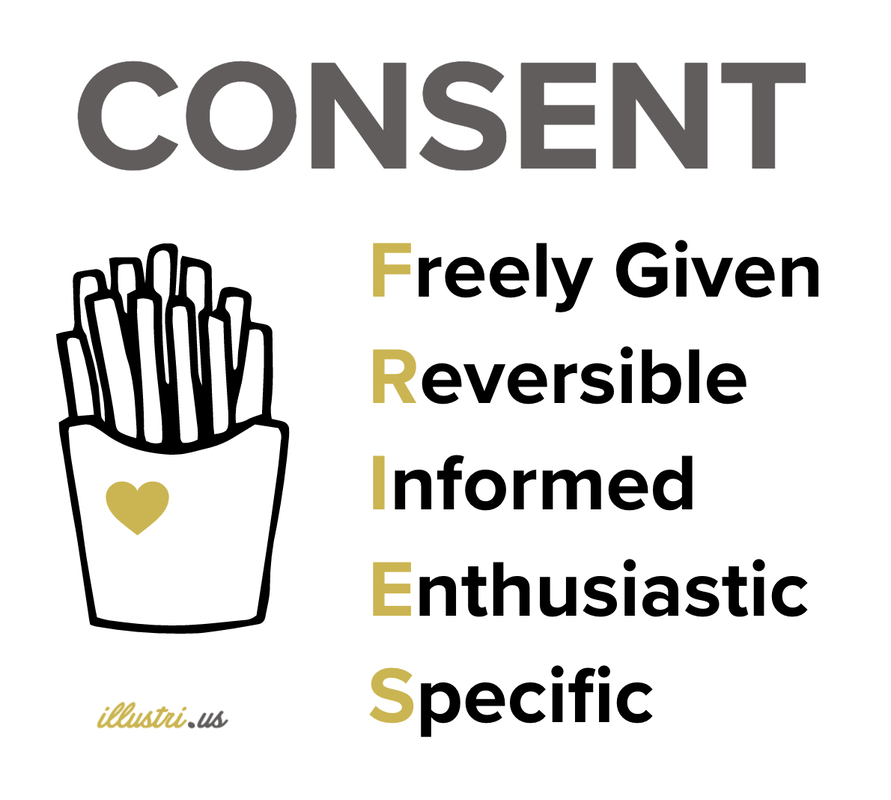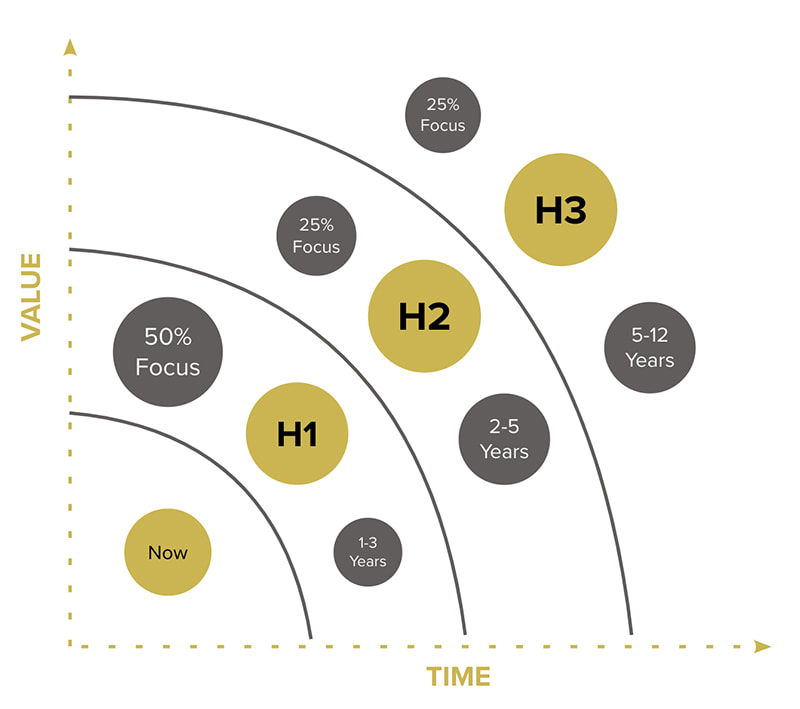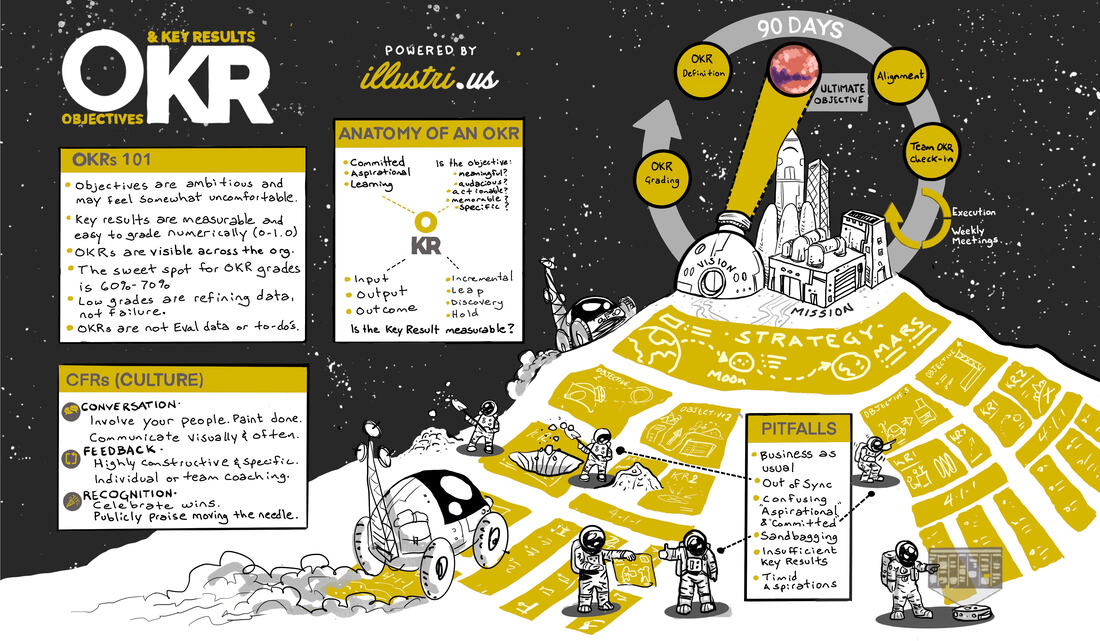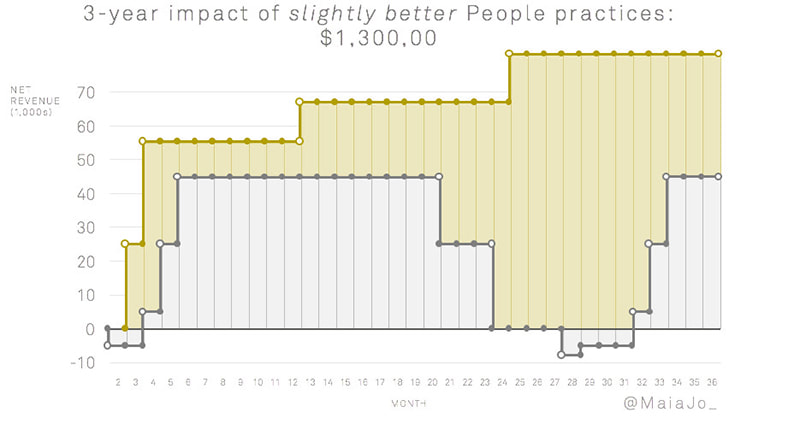|
Consent is a charged word. You usually only hear about it when someone has filed a complaint with the HR department or someone has crossed a boundary they shouldn’t have crossed.
You may be wondering what does consent have to do with my work? Consent is defined as “permission for something to happen or agreement to do something.” An example of this might be, “no change may be made without the consent of all the partners.” Consensual leadership is about encouraging acceptance and agreement before actions are taken and this approach has never been more relevant considering the power differentials between leaders and teams. We recently worked with a Board Chair of a well-known faith community who told us they had never consented to filling the role. She was told that it would be an interim position and that certain criteria would be met (a job description would be provided, regular reviews would happen, there would be administrative support, etc.). The model of governance allowed for her to be nominated without her consent, and she was voted in. She begrudgingly did the work, the criteria were never met, and she ended up serving a term of three years. She admitted that she would have been more than willing to devote herself to fundraising and community development – activities that would have really lit her up – but no one asked her. By the time three years had passed, they were desperately trying to rebuild after the pandemic and critically needed someone focused on bringing in money and reaching out to the community. Unfortunately, it was too late. She was burned out and resigned. We also work with married teams in our executive coaching program. We call it “Power Couples Coaching.” Unsurprisingly, sometimes issues that hinder these intimate relationships also affect the bottom line and their ability to turn toward each other, communicate effectively, and lead as a team. In these cases, we find it useful to discuss consent in terms of how it affects the communication inside the household and the business (i.e. ill-timed business updates over dinner, or worse, during date night). FRIES is an acronym for the elements of consent developed by Planned Parenthood to inform and educate young people about the importance of consent in relationships. Here’s what it looks like when applied to organizations.
And, enjoy the FRIES!
0 Comments
THE 7 TYPES OF INNOVATION
ISO TC 279 defines innovation as "a new or changed entity realizing or redistributing value." At Illustrious, we define innovation as the act of creativity and experimentation that turns your best ideas (and even your best failures) into value. This means that whether we’re talking about corporate innovation or a small business that encourages innovation best practices on small teams, you can’t have innovation without the ability to 1) generate and elevate new ideas, 2) iterate ideas into process maps and prototypes, and 3) validate and scale those idea prototypes into the right audience fit. Innovation strategy falls into numerous categories. These include:
THE 3 HORIZONS OF INNOVATION An organization’s innovation strategy also falls into what McKinsey and Company call horizons. These are the time-bound areas of focus for innovation efforts. The first horizon (H1) is the home for any short-term innovation strategy and includes both “incremental” and “notable” shifts along the value scale. Incremental shifts include improvements or additional unique features to products and services (think a toothbrush with rubber grips or a flipchart with handles). According to Magnus Penker, author of How to Assess and Measure Business Innovation, “notable” shifts include a “distinguishable advance in design, process or business model” (think the RAZR phone or disposable hearing aids). The second horizon (H2) includes mid- to long-term innovation efforts and results in significant or “radical” shifts. This means there is an advance in the product or experience design as well as to the process or business model (think Southwest Airlines or iPod/iTunes). The third horizon (H3) is where we see game-changing transformational shifts. The hallmark of the third horizon is that at least two important advances are made in a combination of design, process or business model. (Think market disruptors like the razor and blades model or the light bulb and electrical grid.) Each of these corporate innovation types requires a different leadership style (entrepreneurial, democratic/participatory, coaching/charismatic, etc.). Each type requires a decision to buy, build, partner or do “open” innovation (collaboration outside the walls of the business). With each leap, what got you there will not get you where you’re going. At each horizon, you will take on new or different team members, mindsets, language, business systems and management methods. When you commit to the practice of innovation, you are not only committing to changing your surroundings, but also to changing yourself. If you’re ready to have a conversation about the inner work required to lead innovation in your business, we’d love to help you shine. Do you sometimes feel like the people in your business are speaking different languages or reading from different playbooks? Do you fear that, if asked, your team wouldn’t be able to tell you what your top priorities for this year (or this quarter) are? You are not alone. 64% of leaders believe their team can tell them the top priorities from memory. Unfortunately, only 2% can do it. Why the disparity? Your business goals need to be kept simple. They need to be reduced to the fewest possible metrics, the fewest goals, the fewest steps, the fewest moving parts. THEIR HISTORY Objectives and Key Results (OKRs) is a goal-setting framework used by individuals, teams, and organizations to define measurable goals and track their outcomes. It all began in 1954 when Peter Drucker published his book The Practice of Management, which introduced the concept of “Management by Objectives.” In 1975, John Doerr, at the time a salesperson working for Intel, attended a course taught by Andrew Grove where he was introduced to the theory of OKRs, then called "iMBOs" ("Intel Management by Objectives"). The development of OKRs is generally attributed to Grove who introduced this approach at Intel. Grove later documented OKRs in his 1983 book High Output Management. Then, as fate would have it, in 1999, Doerr introduced the idea of OKRs to Google. The idea took hold and OKRs quickly became central to Google's culture as a "management methodology that helps to ensure that the company focuses efforts on the same important issues throughout the organization." Doerr published Measure What Matters, his definitive book about the OKRs framework, in 2017. Christina Wodtke, who worked at Zynga with John Doerr, published her shorter (and arguably superior) book, Radical Focus in 2016. WHAT OKRs ARE (AND AREN’T) OKRs are not a strategic planning, project planning, or performance evaluation framework. They are an alignment framework and are intended to get your team facing in the right direction and reading from the same page over the next 90 days. Imagine a construction company - let’s call them ABC, the Amazing Building Company - with no foreman, no plan, no deadline, and no meetings. The workers may feel pulled in many different directions, working on many things at once, and never have a sense of what anyone else is doing. You may actually feel like that now in your business. If half of the workers at ABC are digging holes over the next few months, and the other half are filling them, the company makes no progress on their plans to break ground. However, if they decide that there is plenty of time to move earth later and that for the next 90 days they need all hands on deck to dig, dig, dig, then they will make significant progress on the plan. The workers will expend the same amount of energy, but now instead of feeling like they are in a swirl of inefficiency, they will feel oriented toward a common goal and be working toward something together. OKRs are an ideal solution for businesses needing to achieve a specific goal or finish a certain project, prove or disprove a hypothesis, or get everyone on the team leaning into a specific process or change (a.k.a. “steering the elephant”) over the next 90 days. An aligned team is an efficient team. And an efficient team is a powerful team. WHY USE OKRs? In practice, using OKRs is different from other goal-setting techniques (KPIs, SMART Goals, OGSM, Balanced Scorecards) because of the aim to set very ambitious goals. When used this way, OKRs can enable teams to focus on the big bets and accomplish more than the team thought was possible, even if they don’t fully attain the stated goal. OKRs can help teams and individuals get outside of their comfort zones, prioritize work, and learn from both success and failure. Plenty of leaders do not put in the time to do their OKRs well. They are busy hiring, dealing with emergencies and top priorities, or chunking their time in an attempt to leverage and maximize their activity to output ratio. The best leadership doesn’t break when it comes to setting strategy and key initiatives. They put in the time to discuss important ideas with their top executives because they know that an extra day spent planning will reap rewards down the line if executed properly. Taking the time to plan OKRs and adequately assess them after each time period is a sign of respect for your colleagues and employees. It means you respect the placement of their time and efforts. OKRs are only as effective as your commitment to using them and your efforts in creating them. If you need help implementing OKRs in your business, let’s set up a call to see if we can help.
You can also download our free e-book, OKRs 1.0: A Beginners Guide to Measuring What Matters in Your Organization, to learn more about the anatomy of OKRs and when to use them. Guest post by Ashley Preston You did it. You finally took a chance and hired a coach to help you. They are promising to help you turn your life and your business around, but as you work with them, you can’t help feeling like something is a bit off. Are you having buyer’s remorse? Or is it something else? Are you comfortable talking to them? Are they making it easy for you to open up and share what you need to with them? Or do you find yourself hesitating to use the services you paid for? If you’re having doubts, you might want to ask yourself if you’ve hired the right coach. Here are five signs it might be time to look for the exit. 1. They Bully You or Harshly Judge You You hired a coach because they could help you in areas where you admitted you’re struggling. They are there to encourage you; not make you feel guilty or dumb for not knowing something in the first place. No one should make you feel inferior for owning up to your own shortcomings and getting help to improve those personal limitations. That’s how we learn and grow as people. If your coach is making you feel like you’re inferior, if they are talking down to you, or dismissing your concerns without valid reason, you’re not dealing with the kind of person who should be working as a coach. You can’t solve your real problems when you can’t talk about them without fear, and you can’t be truly vulnerable with someone who doesn’t show you the respect you deserve. 2. They Minimize Your Experience, Education, or Training Coaching takes a great deal of compassion, empathy, and patience. It requires the coach to step into your shoes and understand where you’re coming from. A good coach will point out your strengths and remind you how far you’ve already come. That coach would embolden you to use whatever tools are at your disposal in order to move forward with confidence while helping you sharpen up other areas in your life so you can be even more effective. However, if you have a coach who is telling you that because your training or experience didn’t come from the “right” place, or it’s not valid, then you have a crappy coach. It doesn’t matter how you learned what you know. As long as you have your facts straight and are confident in your experience, your perspective is valid and your knowledge is valuable. Don’t let anyone tell you otherwise, especially the coach who was hired to highlight what you bring to the table. No one gets to dim your shine! 3. They Tell You What Kind of CEO You Should Be Did you build a business? Did you make decisions and sacrifices to get where you are? Did you create something and see its success bloom? With all that experience, you have developed your own style of work and management. While coaches can help you reflect on parts that might not be working, or help you see some fresh perspectives that you haven’t considered, it is not your coach’s job to change everything. Why fix something that isn’t really broken? Don’t trust a coach who can’t see your leadership potential and success. A good coach will work with you to create a better mindset so you can be the best version of yourself, not tear you down and rebuild you from the ground up. Walk away from the coach who makes you feel like a terrible CEO when it’s clear that most of what you’re doing worked long before they walked into the picture. 4. They Tell You They Know Exactly How to Fix Your Business One size doesn’t fit all. Some coaches want to believe that a one-size-fits-all approach will work, but it is simply a lazy approach that doesn’t take into account the complexities of your operation or the free market. While a good coach can provide feedback, structure, and advice, these things should act as guidelines. You should have the room to ultimately make decisions that fit your own business without feeling guilty or stupid for doing so. If your coach is saying things like “just trust the program, it works for everyone” there’s a good chance that their system isn’t battle-tested, and they don’t understand the importance of giving you the power to make the choices that will ultimately serve your company best. Only you will know what that is, and a good coach will know when to encourage you to do so. 5. They Bombard You With Too Much Information You need to walk before you can run. A coach is there to develop your potential. A good coach wants to facilitate the learning process by challenging your thoughts and creating an environment that enables you to take it all in. They know that you should master the fundamentals before moving on to more advanced routines. Good coaches care about how much you get out of the program. A bad coach, however, will likely throw a massive amount of information at you, sometimes in no particular order. They do so because oftentimes it makes them feel smart, and if you can’t take it all in, then it’s not their fault that you don’t succeed. It is a lazy approach that leaves you wanting. If your coach isn’t taking the time to explain things, and if they aren’t giving you information that is digestible, you’re not going to benefit from the program like you should. There Are Too Many Coaches Out There. Don’t Settle for Bad Coaching. You should get what you paid for. You should feel supported and seen by a coach. You should feel like they are there to help you. You should feel like they are learning from you as much as you’re learning from them. You should be able to trust them and their vision for you. If you don’t feel that way about your current coach, then it’s time to make a change. Don’t settle for less than what you deserve. Contact the team at Illustrious, ask about our Amplified Executive Coaching program, and let’s get you back on track with someone in your corner who believes in you.
Guest post by Ashley Preston There is a belief in the business world that almost every employee is replaceable. There are numerous CEOs who will shrug when they hear the staff is struggling with the workload. There are plenty of executives who think that demanding schedules and high expectations will help filter out the mediocre workers and leave only the best ones standing. Those same CEOs watch people leave year after year, either through voluntary or involuntary departures. They regularly make rapid changes with each new worker they bring in – hoping to find the formula that keeps profits growing. They look to hire people who will continue to bring 110% to the table every day. They certainly do not mind when these workers put in the extra time and energy to advance company interests. These CEOs will often put more and more on these new workers’ plates until these employees can no longer handle the workload, and then let them go for being unable to perform like they once did. It happens again and again, and while the company continues to adjust to make room for new people who are still eager to right the ship, they continue to waste time and money trying to perfect a system that is deeply flawed at its core. These companies will continue to hit ceilings that without a knowledgeable, passionate, and energized team, they will never break through. Here is the true cost of employee burnout and high turnover – and what you can do to stop the bleeding before your best talent walks out the door. What it Costs to Regularly Replace Workers Employee turnover is expensive, and the entire team feels it when a superstar leaves the company. Researchers report that the cost of losing an employee costs the company thousands of dollars, and the more important the position, the more it will cost to fill. Hourly workers cost on average $1,500 an employee, including the cost of hiring, onboarding, training, ramp time to peak productivity, loss of customer engagement, and general morale impact. Technical positions cost companies about 100-150 percent of their salary. C-suite turnover costs over 200 percent of the salary to replace and get up to speed. They describe employees as appreciating assets that create more value for the organizations over time. It is estimated that about two-thirds of all sunk costs are intangible, including lost productivity and knowledge. One case study argues that retaining a sales person for three years instead of two, along with better onboarding and management practices, yields a difference of $1.3 million in net value to the company over a three-year period. However, the most substantial impact on turnover is not the cost – it is the damage that it does to your remaining employees. A beloved team member’s departure can have a huge impact on company morale. It leaves holes in team dynamics and can leave other employees asking if they should be looking for a different job too. It does not help when those same employees must take up the extra slack. If the team is already taking on a full workload, they might not be happy to spread themselves so thin. Halting those projects could lead to delayed releases and lost revenue but pushing employees to work harder and more risks employee burnout and even more staff turnover. Employees can spot a toxic work culture from a mile away and will not feel the need to stay loyal to a company that does not feel the need to make improvements. 47 percent of active job seekers cite company culture as the primary reason they left. Companies with high turnover might soon find it difficult to attract top-tier talent after a while too. There are so many ways for current and former employees to review the company and its culture. Earning a reputation as a revolving-door employer will not do you any favors in attracting good candidates. Regardless of the industry, some turnover is just part of business, but keeping good employees happy and productive is the best way to ensure company success. How to Reduce Employee Turnover Researchers say that about 75 percent of all turnover cases are preventable. There are proactive steps you can take to ensure your employees feel seen, valued, and empowered to help the company succeed. Say Thank You Failing to recognize employee achievements and celebrating their successes is one of the fastest ways to burn out your staff. It will make them feel undervalued and make them more likely to disengage from the job. Companies that have strong employee recognition programs have a 31 percent lower voluntary turnover rate compared to companies who do not take the time to say thanks. Leverage employee spotlight programs to highlight a job well done. Take advantage of your company's social media platforms to recognize good employees. Be sure to use rewards as you can – while monetary are always welcome, you can get creative with how you say thanks. What matters is just that you take the time to say thanks. Get Feedback Make sure your employees feel like they have a say. Give them an easy way to provide constructive feedback so they can raise concerns and address issues before they become problems. Thanks to technology, you can use tools like employee engagement surveys to let them share their thoughts anonymously. Keep tabs on your rockstar employees and be sure to check in to see what they like about their position and what you can do to help them further succeed. Be Empathetic Offer employees what they want. Benefits like flexible schedules, remote work, and substantial health insurance packages are major draws for new employees. Nearly 40 percent of employees have left their job for one that offers remote work. Make sure your employees understand you see them as people with lives outside of the office. Being an empathetic employer has major benefits too. Not only will the reputation help you attract better employees, but the employees you already have are more likely to work harder. Nearly 80 percent of employees are willing to work longer hours, and 60 percent of them will accept less pay if they feel like their employer cares about them. Taking care of your employees takes care of business. It is the best way to ensure that you and your entire team can perform to the best of your abilities and create the success you are striving for. If you are struggling right now, contact us to see how to regain control of your company culture, realign your mission, and close any communication gaps you have.
|
Details
ABOUT THE AuthorJoran Slane Oppelt is an international speaker, author and consultant with certifications in coaching, storytelling, design thinking and virtual facilitation. Archives
March 2024
Categories
All
|









 RSS Feed
RSS Feed